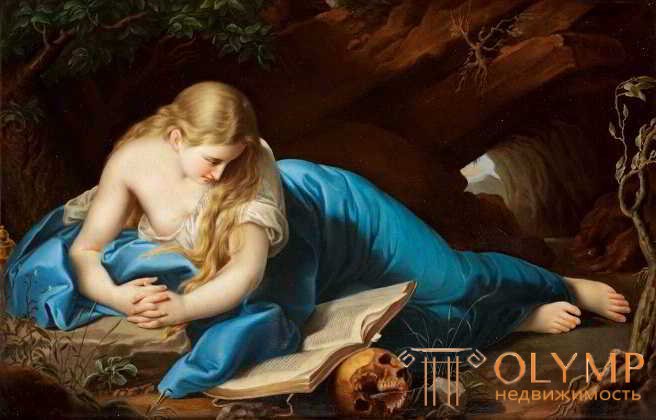
1. General overview of the development of painting
In the 18th century, Italian painting lost its position and influence on other countries. Italian artists have a strong French influence. The original styles have been preserved the longest in Venice, where many outstanding masters of this era work.
Italian painting completely outlived itself during the 18th century. Above we have already named a number of skillful, consciously pursuing their goals, possessing decorative lines and colorful constructions, passionate in temperament, but not particularly deep artists, who everywhere marked the transition from XVII to XVIII century. Among them are Luca Giordano (1632–1705) and his illustrious pupil Francesco Solimena (1657–1747), who reported the new brilliance of the Neapolitan school, Carlo Maratta (1625–1713) and his pupil Giuseppe Chiari (1654–1727), with their languid forms and with light colors showing the decline of the Roman school, Count Carlo Chignani (1628–1719) and his pupil Marco Antonio Franceschini (1648–1729), who once again blew the flames of the Bologna school. Tracing all these schools to the latest manifestations of their lives would be idle. Outside Venice, which one still continued to think and feel in colors, few artistic personalities came to the fore. The number of known artists and surviving ceiling, wall altar and easel paintings is enormous, but few of them, again with the exception of the Venetians, deserve mention.
In a sense, architectural painter Giovanni Paolo Panini (1691–1764) possessed artistic individuality; Visiting a theater painter in Paris, but returning from there to Rome, he assimilated and surpassed everything that his Roman predecessors in the field of architectural painting, such as Ottavio Viviani and Viviano Codagora, achieved in the 17th century. Clearly, firmly, confidently, equally captivating in architectural and pictorial terms, he depicted his ruins with their clear landscape distances and colorful figured groups. The best of his paintings can be seen in the Louvre and in the Madrid Museum.

Fig. 216. "The Penitent Magdalen." Picture of Pompeo Batoni in the Royal Dresden Gallery
Only with a known wobble do we call here the names of landscape painters in the proper sense, as Andrea Lucatelli (died in 1741), who continued to impose in Rome the liquefied style of Dughet, Francesco Tsucarelli (1702–1788), who wrote in Venice and in England motley, outwardly ornamental landscapes, and Alessandro Magnasco (1681–1747), sometimes mixed with Salvator Rosa and performed in Milan and Genoa a series of spectacular landscapes written in a casual and broad manner. Not without hesitation, we even call the names of historical painters popular at the time, such as Francesco Trevisani (1656–1746), a native of northern Italy, who turned Rome into a pleasing eclectic, Antonio Cavallucci (1752–1795), who tried to combine the drawing of Guido Reni with the color of Correggio , and Sebastiano Konka (1676–1764), a pupil of Solimena, who tried in vain in Rome, as already shown by his “Magi before Herod” of the Dresden Gallery, shake off the fetters of routine. But Konka sought to at least prepare a turn for the new among his students, and in his Roman workshop was Pompeo Batoni from Lucca (1708–1787; Benallo's book), the first Italian painter, influenced by the ideas of Winckelmann and Mengs, who took Raphael as his model , ancient art and nature; and although in reality, like Mengs, whom we leave to the German school, became only a skilled eclectic who first swore allegiance to Raphael and Correggio, but also affected by the spirit of French Rococo painting, he still stands out from a number of his Italian contemporaries as new and apart standing away. His forms seem to us cold and academic, his blooming coloring with transparent light and shade - intentional and calculated. But just his sweetness makes him still one of the favorites of the crowd. The greatest inner virtues are his early paintings, the altarpiece of the main altar of the church of Santi Celzo e Giuliano in Rome, depicting Christ in the clouds with four saints, and both famous paintings of the Dresden Gallery: the Baptist resting in the desert and the repentant Magdalen, still now belonging to most frequently copied pictures. The most gratifying works of Batoni include his portraits, a double portrait of Emperor Joseph II and the Duke of Tuscan Leopold (1769) in the Vienna Court Museum, his self-portrait (1765), and the portrait of Elector Karl Theodore (1775) of the Munich Pinakothek.
Venetian painting
True, in Venice in the transitional period from the XVII to the XVIII centuries there were enough painters who were tired and sluggishly following the general artistic fashion, with whom we would not find specifically Venetian pictorial merits. We are referring to artists such as Andrea Celesti (1639–1706), Antonio Bellucci (1659–1715), Sebastiano Ricci (1659–1734), Antonio Molinari (1665–1727), whose weaknesses are convinced by their paintings in the Dresden Gallery as well as painters like Antonio Balestra (1666–1740) and Gregorio Lazarini (1655–1740), which we must name for the sake of their students.
To the followers, and probably to the disciples of Piazzetta, belonged to Giovanni Battista Tiepolo (1696–1770), in which our time recognizes not only the undoubtedly the largest master of Venetian painting of the 18th century, but in general one of the greatest painters of all time. In this new light, he appears to us in the works of Buisson, Chenneviera, Geltof, Leitshug, Meisner, Moderne, Molmenti, and Zack. After years of apprenticeship in the workshop of the aforementioned Gregory Lazarini, the boring Venetian Raphael, he experienced the long lasting influence of Piazzetta, and then developed further, mainly in the works of Paolo Veronese, assimilating to himself, by the way, his attachment to magnificent porticos as the scene of action depicted events, and to balconies with balustrades, from which the viewers are looking down. Light, but full-sounding chords of forms and colors and fresh, foreground figures snatched from life, characterize his creations. Tiepolo was primarily a decorative talent and first-rate painter, and only; but at the same time he was able to spiritualize with his breath the inner life of his magnificent ceiling, wall and easel paintings, the bright rhythm of which often corresponds to the wide rhythm of his lines. Air and light are just as vital elements of his art as the main surfaces of huge ceiling paintings with groups of figures scribbled only at the edges, connected to each other and kept here in order to leave free air around the edges, filled with light air space. which only in some places come across separate, like lost figures.
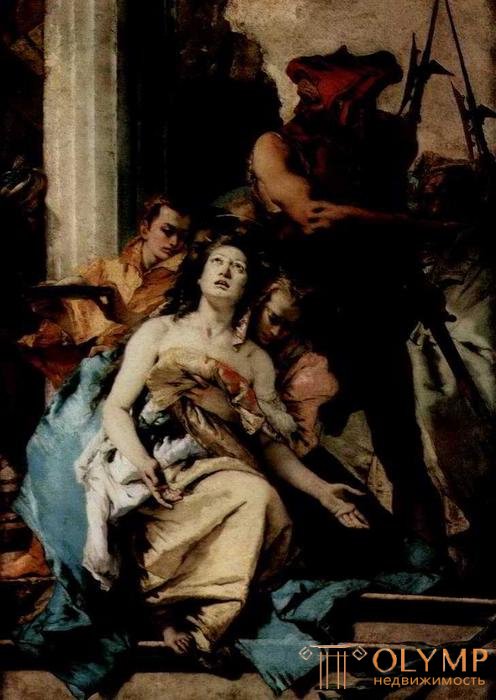
Fig. 217. "The torment of St. Agatha." Painting by Giovanni Battista Tiepolo in the King Friedrich Museum in Berlin
With amazing ease, as if joking, he was also able in a short time to fill the most extensive planes with compositions with a multitude of figures, and it was these “modern” qualities of his art that once again awakened his quickly established world fame to a new life in our days.
Excellent, still youthful, fresh Tiepolo wall and ceiling frescoes in the archbishop's palace in Udine arose in 1732–1733; at the same time, a “Neptune’s Wedding with Venice”, unjustifiably attributed to an earlier period, appeared in the “four doors” hall of the Doge’s Palace in Venice; In 1733, the magnificent decoration of the Colleoni Collei in Bergamo followed, in 1737 a series of magnificent frescoes in the twelve rooms of the Villa Valmarana in Vicenza, to which the Moltimentos dedicated a special work. Between 1740 and 1743 Tiepolo wrote the inspired and vital apotheosis of Simon Stoke (the Holy Roman Catholic Church, general of the Carmelite Order (1164 to 1265). - Approx. Transl.) On the ceiling of Scuola del Carmine, in 1743–1744. the famous ceiling in the nave of the church of the barefoot Franciscans (Lia Scalzi) in Venice, brilliant with a bright colorful fantasy characteristic of him, depicting the transfer of the house of Our Lady in Loreto, in 1747 three colorful lamps and a more colorful main altarpiece of the Church of Santa Maria del Rosario in Venice .
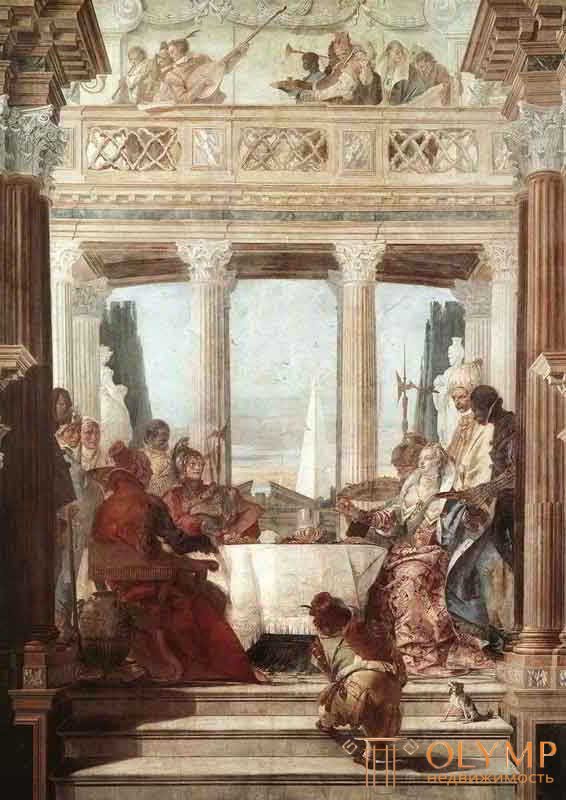
Fig. 218. "Cleopatra's Feast". Fresco by Giovanni Battista at the Palazzo Labia in Venice.
From the separate oil paintings painted by Tiepolo in the period before 1750, the “Holy Family” of 1732, now in the sacristy of the cathedral of Sts. Mark in Venice, with its rather heavy color, still resembles Piazzetta. Lighter and more colorful already St. Agatha of the Berlin Museum (1735). “Holy Conversation” (“Santa conversazione”), 1739 in Budapest, marvelous Saint. Catherine in 1746 in Vienna and deeply felt, rich and soft in form and color of St.. Patricius 1750 in the city museum of Padua.
In 1750, Tiepolo was invited to Würzburg. Here between 1750 and 1753 his striking frescoes of the archbishop's palace arose. How much power in the inspired forms and colors of the ceiling frescoes of the main staircase, depicting Olympus and the four parts of the world! How much originality and elegance in the composition of the frescoes from the life of Friedrich Barbarossa in the Imperial Hall! How fiery and vital are the altar images of the Ascension of the Virgin Mary and the Fall of Angels in the home church!
Returning to Italy, Tiepolo performed in 1754–1755. their last large Venetian church paintings - three murals depicting the “Victory of Faith” in the church of Santa Maria della Pieta, and in 1757 their famous frescoes of the ceiling and walls in Palazzo Labia: on the ceiling of the large hall - “The triumph of a genius over time”, “Cleopatra's Feast” and “Anthony and Cleopatra's Departure” are on the walls, other images in other halls, all this is done with transparent clarity of forms and colorful brilliance, showing the master at the height of his talent.
Of the light and confident in touch, rich in tones of Tiepolo's engravings, juxtaposed by Moltimentos, we can only mention here 10 sheets of Capricci and 24 sheets of Scherzi di fantasia, which later sparked the creative imagination of the great Spaniard Goya.
2. Followers and contemporaries of Tiepolo
The sons of Giovanni Battista Tiepolo, Giovanni Domenico (born around 1726, died in 1795) and Lorenzo Tiepolo (born in 1728), walked like painters and engravers in the footsteps of their father. However, they did not have the talent for the independent further development of his art.
Some ways went some students of Antonio Balestra. Giuseppe Nogari (1699–1763) used in his portraits and portrait-like half-figures, in addition to Bologna, apparently also northern, then Dutch artistic motifs. Count Pietro Rotary (1707–1762), who died in St. Petersburg as a Russian court painter, is a weaker eclectic in large altar paintings than in pale, but finely felt portraits in color. The Dresden Gallery introduces us to both masters. To the most popular, illustrious courtyards and academies, artists of the time belonged to Rosalba Carrier (1675–1757), to which Malamani’s research is devoted. In her hands rose pastel painting to a completely unexpected height. As we saw, even the famous Frenchman Latour was a follower of this field. Her colors are light, lively, graceful, pale in colors but graceful in transmission, and allegorical half-figures, which in one Dresden gallery remained 175. She also had great success as a miniaturist. All her art, however, is French rather than Italian in character. A true Venetian, on the contrary, was a portrait painter and painter of the folk genre Pietro Longhi (1702–1762). His portraits, such as the male in London, the female in Dresden, are distinguished by the spontaneity with which faces and clothing are captured. One-of-a-kind his often slightly sarcastic street and home scenes, with their small figures, and although he is not a colorist in the Venetian or in the Dutch sense, but often achieves bright effects of painting and drawing. Already his genres in the Venetian Academy, for example “Behind the Toilet”, “Dance Master”, “The Teacher of Music”, “Apothecary”, “Charlatan”, and his paintings of the London National Gallery, such as: “Home Stage”, “Soothsayer of the Future” , "Rhino", show how new were the tasks that he set for himself, and how independently he coped with them.
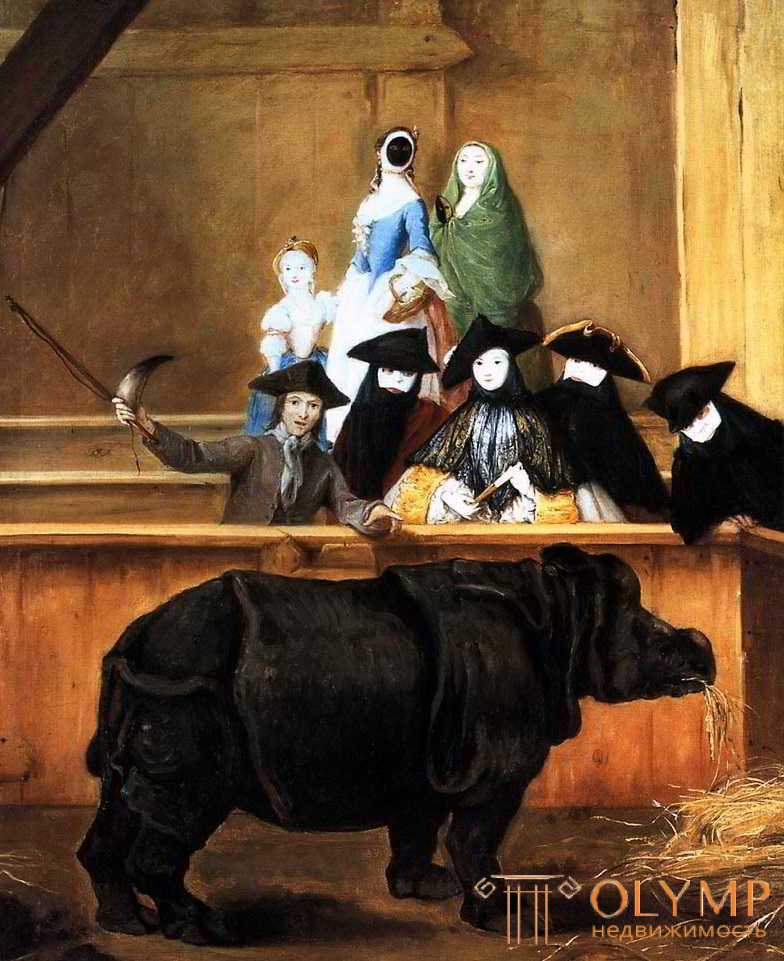
Fig. 219. "Rhino". Picture of Pietro Longhi in the London National Gallery
Finally, the Venetian landscape painting of the XVIII century! Marco Ricci (1679–1729), a student of his uncle Sebastiano Ricci, could, however, be as free as a Bolonian or a Milanese, as a Venetian. Its informative, somewhat heavy ornamental landscapes are in sufficient quantity in the Dresden gallery. The blood Venetians were urban-type painters who achieved perfection in their specialty. This painting of "species" or "prospect" painting should be distinguished from the architectural painting of theatrical scenery, which found its best expression in the paintings of Panini. It was introduced in Rome and in Naples by Casper van Viteel or Vanvitelli (1647–1736), a native of Utrecht. His small, rather dryly painted watercolor urban views could hardly have an impact on the development of Venetian painting of this kind. Its first representative in Venice, Luca Karlevaris (1665–1731), tried to raise the artistic interest of his Venetian species, animating them mainly with historical scenes with many figures. The pioneer of this kind of painting, which turned dry urban views into landscapes full of poetic mood and high artistic dignity for the first time in the south, was Antonio Canal, nicknamed Canaletto (1697–1768). His father and teacher Bernardo Canale was a theater designer. Antonio Canale, whose life and artistic activities were described by Rudolf Meyer, Muro and Uzzann, completed his artistic education in Rome, but he worked, except for a short stay in London (1746–1748), mainly in Venice. The richest collection of his paintings is in Windsor Castle, for example, four magnificent Roman views of 1742, fascinating Venetian views, dating from 1744, and several London views of the Thames. The best of the Venetian species of the elder Canaletto belong to the National Gallery and the Son Museum (Soane) in London, the Louvre, and the galleries of Turin and Dresden. He also engraved, talented and powerful, a number of his species, published by a special album. Каналетто удивительно владеет искусством схватывать с наиболее живописных сторон городские ландшафты, по большей части оживленные каналами, с огромными зданиями по сторонам и на заднем плане, а еще с большим искусством наполняет их всем трепетом атмосферной жизни, напоенной умеренным солнечным светом, и бросает их на полотно широкой, мягкой и тем не менее сильной кистью, вполне живописно. Фигуры, которые ему иногда исполнял Тьеполо, всегда скромно подчинены общему ландшафтному впечатлению.
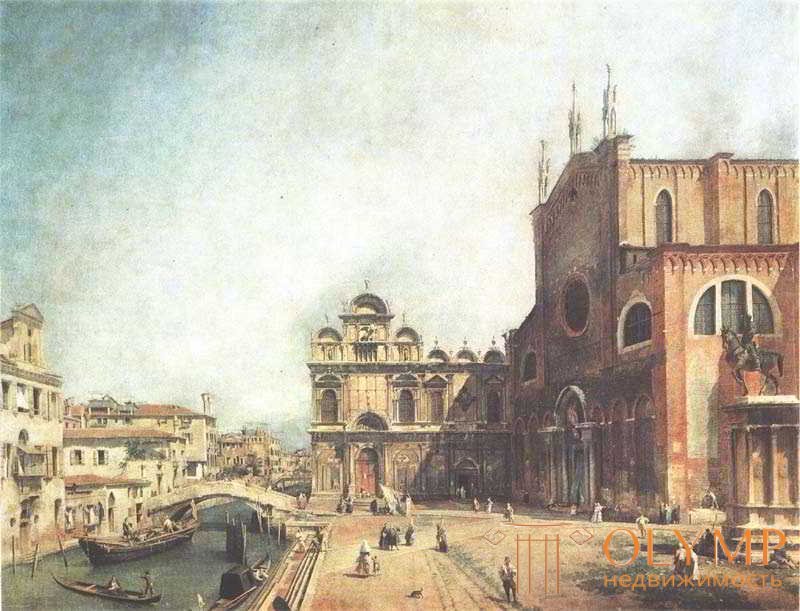
Fig. 220. «Санти Джованни э Паоло в Венеции». Картина Антонио Каналя в Дрезденской Королевской галерее
Of the disciples of Antonio, his nephew Bernardo Belotto, nicknamed Canaletto (1720–1780), who, after traveling to northern Italy from 1746 to 1758, was a court painter in Dresden and then in Warsaw, where he died, should be mentioned in the first place. His early Italian views are sometimes mixed with his uncle’s paintings. His later works, especially the 34 types of Dresden, Pirna and Warsaw in the Dresden Gallery, are already significantly different from the pictures of his uncle by an even more strict air and linear perspective, smoother and cooler lighting and tougher and drier writing, which affects the schematic lines waves. Regarded without regard, they also belong to the wonders of prospect painting.
Guardi - the last famous master of old Italian painting. Italian art has outlived itself in the 600-year struggle. On the new paths of the XIX century, he already had the effort to keep up with the art of other European nations.
Что бы оставить комментарий войдите
Комментарии (0)